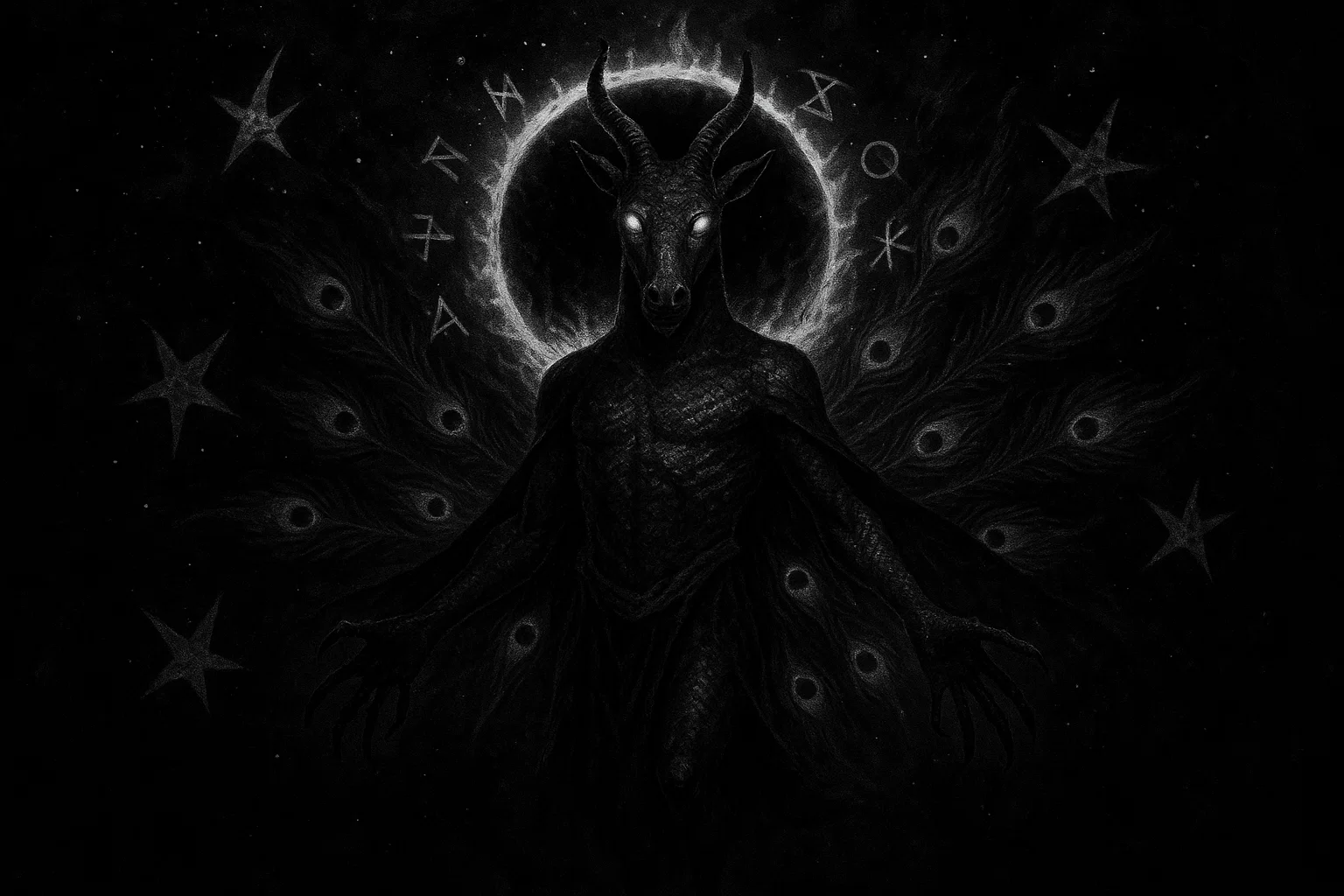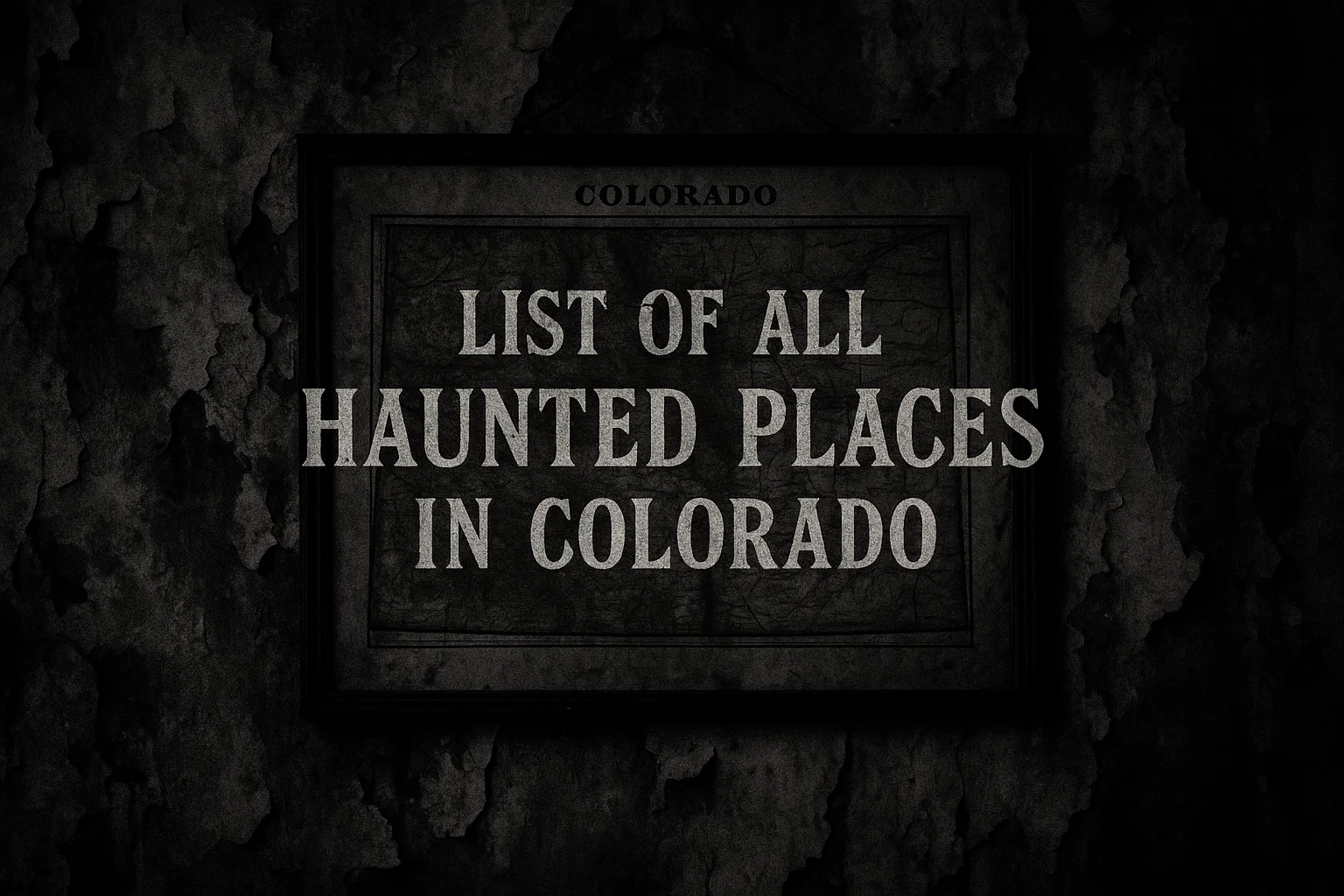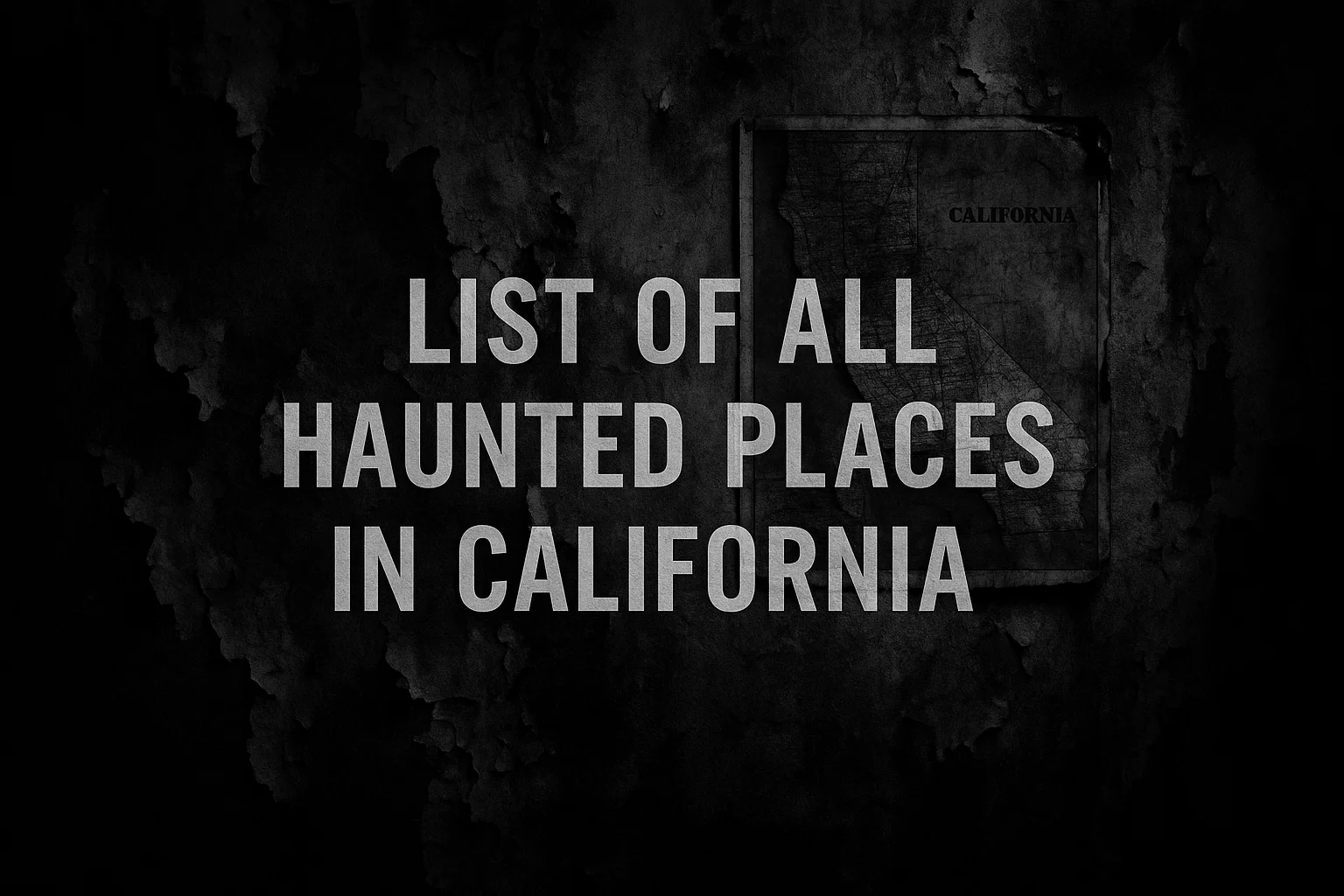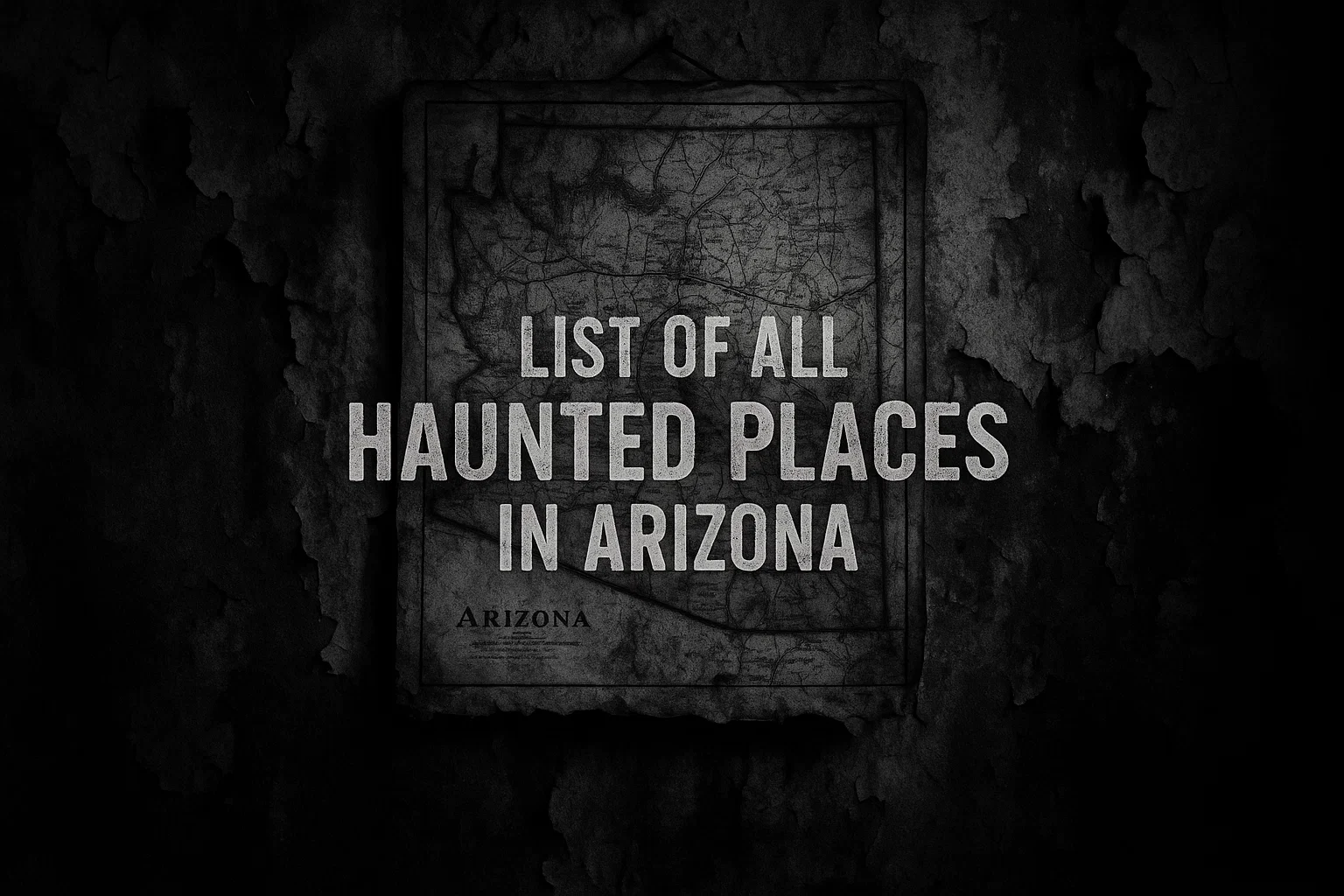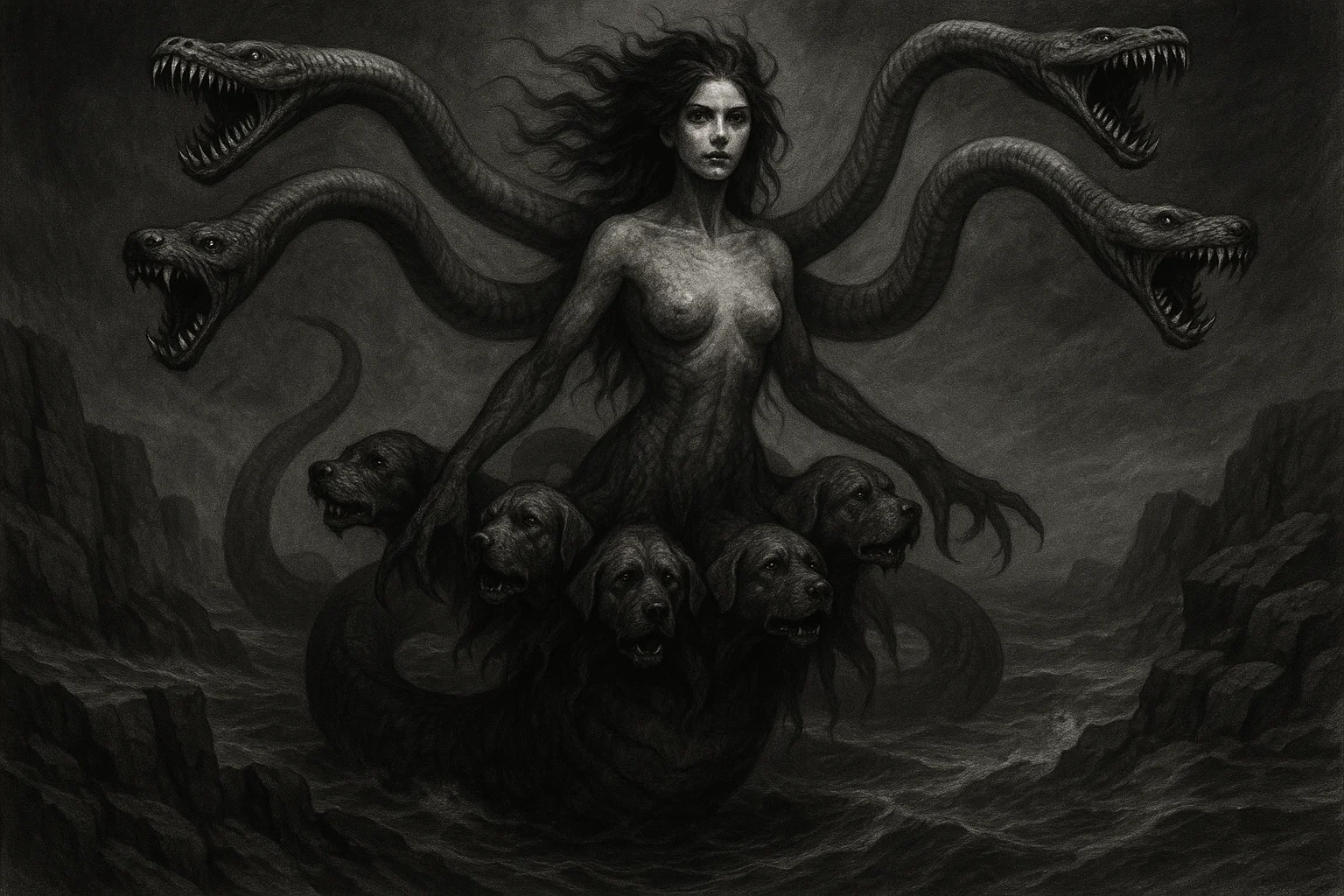What ancient horrors lurk in the flames of forgotten altars, where children were once sacrificed to appease a merciless sun deity? How did a once-revered god of majesty descend into the abyssal ranks of Hell, becoming a symbol of unchecked ambition and soul-scorching treachery?
Adrammelech, the enigmatic demon whose name whispers of corrupted glory, beckons those brave enough to explore the shadows of demonology. As a figure bridging Mesopotamian idolatry and Judeo-Christian infernal lore, he embodies the perilous transformation from divine radiance to demonic malice, tempting mortals with illusions of power that lead only to eternal ruin. Could his peacock-plumed form hide secrets that unravel the very fabric of human pride?
In the vast expanse of occult traditions, Adrammelech stands as a chilling reminder of how celestial light can twist into hellish fire, his legacy etched in biblical condemnations and grimoires of forbidden knowledge.
Yet, his story raises haunting questions: What connections bind him to other ancient deities across cultures, and how does his hierarchical role in the underworld influence the temptations that plague humanity today?
Summary
Key Information
| Category | Details |
|---|---|
| Name | Adrammelech, Adramelech, Adramelek, Adar-Malik, Adramaleck, Andrealphus, Baal-Adrammelech, Adrael, Adramalek, Adoramereku, Atra-malik, Addir-melek |
| Title | Grand Chancellor of Hell, President of the Senate of Demons, Supervisor of Satan’s Wardrobe, Chancellor of the Order of the Fly, President of the High Council of Devils, Chief of Samael, Chieftain of Hell, Governor of the Devil’s Wardrobe, Enemy of God |
| Gender | Male |
| Role | High-ranking infernal bureaucrat overseeing demonic governance and administrative councils; corrupter of pride and vanity; former sun god turned fallen angel; tempter through ambition and deceit; destroyer via fire and illusion |
| Hierarchy | Eighth of the ten archdemons in the Order of the Fly under Beelzebub; high chancellor in Hell’s hierarchy, below Lucifer, Satan, and Beelzebub but above lesser dukes and presidents; chief ruler of the Qliphothic sphere Samael |
| Servitors | Influences lesser demons like Balam through teachings; commands unnamed subordinates in the Senate of Demons; no specific legions named but exerts control over infernal underlings in bureaucratic and Qliphothic realms |
| Superior Demon | Satan (wardrobe supervisor and fearsome superior); Beelzebub (Order of the Fly founder and legislative overlord); Lucifer (supreme infernal emperor); Astaroth (occasional superior in fallen angelic wars); Samael (Qliphothic overseer in some traditions) |
| Powers | Hellfire beam emission from peacock tail eyes; glamour illusions fostering vanity; transfer of forbidden knowledge like ice lightning; soul incineration with giant arrows; levitation and teleportation in smoke; temptation via pride and ambition; necro power in modern depictions; massive magical blasts capable of near-fatal strikes |
| Appearance | Human torso with mule’s head and peacock tail emitting beams; mule hooves and peacock talons; slender figure with pointed ears, ram-like horns, and scaled body; alternatively full peacock or mule; dark sacs on wings and back; androgynous humanoid with long hair in some pop culture variants |
| Etymology | From Semitic ʾAḏrammeleḵ meaning “majestic king” or “glory of the king” (ʾAddîr-meleḵ); Adar-malik (“Adar is prince”); Akkadian Atra-malik (“exceeding king”); possibly Adadmelek (“Adad is king”) linking to storm gods |
| Associated Figures | Anammelech (lunar sibling and counterpart); Sennacherib (Assyrian king with murderous son of same name); Sharezer (co-conspirator in patricide); Uriel and Raphael (archangel adversaries); Moloch (fellow child-sacrifice deity); Baal (epithet connections); Asmadai (throne angel parallel); Lilith (occasional demonic associations) |
| Weaknesses | Shrinks in presence of superiors like Satan due to fear; vulnerable to archangels Uriel and Raphael; countered by divine invocations, humility rituals, and protective mirrors; vanity exploits through flattery or exposure of illusions |
| Opposing Angel/Saint | Uriel and Raphael (celestial vanquishers); Asmadai (balanced throne counterpart); St. John the Baptist (opposer of idolatrous sun worship); St. Michael (aerial dominion reclaimer) |
| Equipment/Tools | Peacock tail for beam attacks; infernal scepter of senatorial authority; wardrobe robes of shadow and flame; fire altars for sacrificial rites; no dedicated weapons but associated with hellfire arrows and smoke portals |
| Pantheon | Semitic/Assyrian (sun god of Sepharvaim); Mesopotamian (Baal and Moloch influences); Judeo-Christian demonology; Qliphothic Kabbalah (Samael sphere); modern pop culture interpretations in anime and games |
Etymology
The name Adrammelech pulses with the echoes of ancient Semitic tongues, a linguistic artifact that encapsulates the demon’s fall from solar sovereignty to infernal infamy. Rooted in Biblical Hebrew as ʾAḏrammeleḵ (אַדְרַמֶּלֶךְ), it is most persuasively dissected as ʾAddîr-meleḵ, where ʾaddîr denotes “majestic,” “glorious,” or “mighty,” and meleḵ signifies “king” or “ruler.”
This interpretation, championed in scholarly analyses, frames Adrammelech as “the majestic king” or “glory of the king,” a title befitting a deity once worshiped amid the scorching sands of Assyrian temples, where his radiance demanded horrific tributes of child immolation.
Expanding this etymological web, parallels emerge in Canaanite and Phoenician inscriptions, where cognate forms like ʾAddîr-milk (“majestic king”) and Milk-ʾaddîr (“king majestic”) appear as epithets for Baal, the storm and fertility god whose thunderous dominion often intertwined with solar motifs.
This linkage suggests Adrammelech‘s name may have evolved from Baal-Adrammelech, blending Baal’s authoritative “lord” with the majestic suffix, underscoring a syncretic fusion in ancient Near Eastern pantheons.
Akkadian influences further enrich the tapestry: proposals like Adar-malik (“Adar is prince”) tie him to Adar, the Babylonian god of thunder and decision-making, whose month governed fates and harvests, implying Adrammelech‘s role in pronouncing infernal judgments.
Alternative theories posit scribal corruptions, such as from ʾĂḏaḏmeleḵ (“Adad is king”), equating him with the Mesopotamian storm god Adad or Hadad, though phonetic discrepancies— the aspirated “h” in Ḥăḏaḏ—challenge this.
William Muss-Arnolt’s reconstruction as Atra-malik (“exceeding king”) draws from epic heroes like Atra-ḫasis, the flood survivor, hinting at Adrammelech‘s survival through mythological floods of transformation.
In Talmudic lore, Sanhedrin 63b derides the name: ʾadar (“to carry”) + meleḵ implies an ass-idol burdened with heathen loads, a satirical jab at idolatrous folly, while Yerushalmi Avodah Zarah 3:42d favors the peacock, its vain plumage symbolizing false splendor.
Greek Septuagint transliterations as Adramélekh preserve the Semitic majesty, facilitating Hellenistic syncretism where Adrammelech might blend with solar figures like Helios. In Qliphothic Kabbalah, the name resonates with Samael’s venomous sphere, inverting Sephirotic glory into demonic poison.
Ultimately, Adrammelech‘s etymology narrates a descent: from “majestic sun” in Akkadian Adar-malik to a chancellor of deceit, his linguistic legacy a cautionary echo of how divine titles corrupt into demonic curses, luring the unwary with promises of regal power turned to ash.
You May Also Like: Naamah: The Seductive Demon Queen of Infernal Desires
What Does Adrammelech Look Like?
Adrammelech‘s visage is a grotesque mosaic of bestial and humanoid elements, a manifestation designed to mock mortal aspirations while instilling terror. His primary form features a sturdy human torso shrouded in tattered robes of flickering shadow, surmounted by the elongated, braying head of a mule—its floppy ears attuned to whispers of conspiracy, and its snout curled in perpetual scorn.
Sprouting from his posterior is a lavish peacock tail, feathers iridescent with infernal hues, each ocellus (eye-spot) pulsating like a malevolent orb capable of launching searing hellfire beams that char flesh and soul alike.
His extremities amplify the hybrid horror: lower limbs end in cloven mule hooves, stamping infernal decrees into the ashen grounds of Hell, while upper arms bear razor-sharp peacock talons, ideal for grasping ethereal threads or rending victims.
In Qliphothic depictions, he adopts a more ethereal silhouette—slender and of average stature, with elongated, pointed ears framing a pallid face crowned by dual horn sets: one pair coiling like a ram’s for brutal charges, the other arching defiantly upward. Dark, scaled sacs dangle from bat-like wings and appendages, oozing viscous ichor that symbolizes corrupted light, his body veined with cracks of glowing magma.
This appearance shifts capriciously: in summonings, he may fully embody a strutting peacock, tail fanned in deceptive beauty, or a charging mule enveloped in smoke clouds, eyes—be they avian or equine—gleaming with judgmental fire.
Such traits are symbolic weapons: the mule’s obstinacy reflects unyielding malice, the peacock’s vanity mirrors his temptations, and the ram horns evoke ancient sacrifices. In pop culture variants, like anime interpretations, he appears androgynous with flowing white hair and orange eyes, black lips curling in sadistic amusement, his form a blend of elegance and eldritch dread.
Historical and Mythological Background
Sepharvaim’s Fiery Altars and Child Sacrifices
The origins of Adrammelech trace back to the sun-baked heartlands of ancient Mesopotamia, specifically the enigmatic city of Sepharvaim, often identified with the twin Babylonian cities of Sippar-Amnanum and Sippar-Yahrurum along the Euphrates.
Following the Assyrian conquest of Samaria in 722 BCE under Sargon II, deportees from Sepharvaim were resettled in Israelite lands, bringing their idolatrous practices.
As detailed in 2 Kings 17:31, these Sepharvites “burned their children in the fire as sacrifices to Adrammelech and Anammelech, the gods of Sepharvaim,” a rite that horrified monotheistic chroniclers and marked Adrammelech as a voracious solar deity demanding the ultimate oblation—innocent lives consumed in flames to sustain his radiant fury.
This mythological strand intertwines with broader Semitic traditions, where Adrammelech as a sun god parallels Moloch, another fire deity infamous for child immolation in the Valley of Hinnom.
Connections extend to Baal, whose epithets like Baal-Hadad (“lord of thunder”) mirror proposed etymological ties to Adad, suggesting Adrammelech absorbed storm-god attributes, his solar heat evoking drought and destruction.
Anammelech, his lunar sibling, formed a celestial duality: sun and moon governing day and night, fertility and war, their worship involving paired altars where flames licked at tender offerings. Talmudic elaborations in Sanhedrin 63b ridicule this as ass-worship, the beast symbolizing burdened idolatry, while alternative texts evoke the peacock, its plumes a vain mockery of divine glory.
The narrative deepens with the patricidal tale in 2 Kings 19:37 and Isaiah 37:38: Adrammelech, son of Assyrian King Sennacherib, conspired with brother Sharezer to slay their father in Nisroch’s temple amid a failed siege of Jerusalem. Fleeing to Ararat (ancient Armenia), this human namesake embodies the demon’s treacherous essence, perhaps a mythological echo of divine betrayal.
In wider connections, Adrammelech‘s Mesopotamian roots link him to Shamash, the Babylonian sun god of justice, whose judging gaze parallels the demon’s senatorial role, or to Nergal, underworld lord of plagues, hinting at fiery pestilence. Globally, parallels emerge with Aztec sun god Huitzilopochtli, who demanded human hearts, or Egyptian Ra, whose solar barge carried destructive potential, illustrating universal archetypes of solar tyranny turned demonic.
You May Also Like: Rahab: Leviathan’s Twin and the Forgotten Demon Prince
The Fall in Paradise Lost
John Milton’s 1667 epic Paradise Lost reimagines Adrammelech as a throne angel turned jinni rebel, his ancient Semitic origins recast in Christian apocalyptic drama.
Once Adrael, a potent celestial guardian encircling the divine chariot, he joined Lucifer’s insurrection during the War in Heaven, his ambition surpassing even Satan’s in guile and mischief.
In Book VI, amid thunderous clashes, Adrammelech unleashes hellfire volleys, his peacock tail fanning illusions to disorient loyal hosts, only to be confronted by archangels Uriel and Raphael. Their flaming swords pierce his smoky essence, hurling him from ethereal heights into abyssal exile, feathers scattering like fallen stars—a vivid metaphor for hubris’ plummet.
This mythological expansion draws from pseudepigraphal texts like the Book of Enoch, where fallen watchers corrupt humanity, positioning Adrammelech as a teacher of forbidden arts. His alliances with Astaroth during the revolt suggest shared astral origins, both demoted to infernal bureaucrats.
Connections to other deities include Persian Ahura Mazda’s solar adversaries or Norse Loki’s deceptive fire, but Milton emphasizes Judeo-Christian ties, linking him to Moloch’s sacrificial fires as parallel corruptors.
In extended lore, Adrammelech‘s post-fall role involves tempting scholars with acausal knowledge, echoing Samael’s Qliphothic poison, where he awakens the Black Flame—a void of ambition devouring light. Modern interpretations, like in horror novels, portray botched summonings unleashing his vengeful shade, blending Miltonic grandeur with contemporary dread.
Qliphothic Ascendancy
In the inverted Kabbalah of Qliphoth, Adrammelech ascends as chief of Samael, the “Poison of God” sphere opposing Hod’s intellectual splendor, a realm of mercurial deceit where knowledge corrodes souls.
As eighth evil sephirah, he enacts acausal agendas—illusions unbound by cause-effect—parallel to Moloch’s causal immolations, corrupting through prideful glamours. His origins as a fallen astral angel under Duke Astaroth during the Great Revolt amplify this, his solar fire fueling Qliphothic awakenings. Connections abound: to Samael as overarching venom, or Lilith in demonic progeny tales, suggesting alliances in underworld torments.
Globally, parallels with Hindu Kali’s destructive dance or Mayan Xibalba lords underscore universal underworld tyrants. In detailed myth, Adrammelech brokers pacts with lesser fiends like Balam, imparting ice lightning for hierarchical climbs, while adversaries like Asmadai counter his thrones.
Rituals invoke his aid for perilous enlightenment—wealth via misdirection—but warn of capricious retribution, his majestic throne forged in alchemical dross. This layer synthesizes Mesopotamian sun worship with Kabbalistic inversion, portraying Adrammelech as eternal corrupter, his sphere a labyrinth where ambition poisons eternity.
You May Also Like: Ariton (Egin): The Demon Who Knows Your Past, Present, and Future
Historical Mentions
| Text/Grimoire | Year | Description | Excerpt |
|---|---|---|---|
| Book of Kings (Hebrew Bible) | c. 550 BCE | Denounces Sepharvites for immolating children to Adrammelech as a sun god post-Assyrian resettlement, emphasizing idolatrous corruption. | “The Sepharvites burned their children in the fire as sacrifices to Adrammelech and Anammelech, the gods of Sepharvaim.” (2 Kings 17:31) |
| Talmud (Sanhedrin) | c. 500 CE | Mocks Adrammelech as an ass-idol for burden-bearing worship; alternative peacock form symbolizes vain idolatry. | “These heathen worshiped as God the same animal which carried their burdens.” (Sanhedrin 63b) |
| Paradise Lost (John Milton) | 1667 | Portrays Adrammelech as ambitious fallen jinni, defeated by Uriel and Raphael in heavenly war. | “Adramelec, with his mule’s head and peacock’s tail, fell vanquished by the seraphim’s flaming swords.” (Book VI) |
| Dictionnaire Infernal (Collin de Plancy) | 1818 | Depicts as chancellor, senate president, wardrobe governor; mule-peacock hybrid; Sepharvaim child-burner. | “Adramelech: great chancellor of the underworld, steward of the wardrobe of the sovereign of demons, president of the high council of devils. He was worshiped in Sepharvaim, a city of the Assyrians, who burned children on its altars.” |
| Pseudomonarchia Daemonum (Johann Weyer) | 1577 | Ranks among high demons in hierarchies, with senatorial authority and solar roots. | “Adramelech, a great duke, president of the devils’ senate, appears in the form of a mule or peacock, commanding legions through infernal decree.” |
| The Book of Demons (Victoria Hyatt & Joseph W. Charles) | 1974 | Positions as Hell’s chieftain under Samael; eighth evil Sephirah; peacock symbolism and fire associations. | “Adramelech himself is often portrayed as a peacock… He is the eighth of the 10 evil Demons of the sephirot of the Tree of Life.” |
Adrammelech’s Powers and Abilities
Adrammelech commands an arsenal of malevolent abilities that set him apart from mundane demonic entities, his powers a distillation of solar fury warped into tools of corruption and annihilation.
Central to his repertoire is hellfire beam emission, where ocular spots on his peacock tail unleash concentrated blasts capable of incinerating souls or devastating landscapes, a unique trait tied to his ancient sun god origins rather than generic infernal fire. This power tempts mortals by promising “enlightened” dominance, gradually eroding their ethics as they wield illusory might, leading to self-destructive isolation.
His glamour illusions, another signature ability, weave veils of grandeur that amplify vanity, transforming humble aspirations into ruinous obsessions— a politician sees rivals humbled, only to betray allies in pursuit of false thrones.
Unlike common demonic deceptions, Adrammelech‘s glamours draw from Qliphothic acausality, defying logic to corrupt through non-linear fates. He transfers forbidden knowledge, such as ice lightning imparted to allies like Balam, fostering dependencies that bind recipients in eternal debt, tempting scholars with wisdom that justifies moral voids.
Soul incineration via giant hellfire arrows targets the defiant, obliterating essences in agonizing spectacles, a power evoking Sepharvaim sacrifices but scaled for infernal warfare.
Levitation and smoke-cloud teleportation allow elusive maneuvers, surveying temptations from afar while evading retribution, corrupting wanderers with promises of ethereal escape. In pop culture expansions, like Black Clover, he exhibits necro power—manipulating undead energies for massive blasts nearly fatal to anti-magic wielders— and debates over attributes suggest thunder or fire mastery, enhancing his destructive allure.
These abilities collectively corrupt by exploiting pride: ambition becomes hypocrisy, guile surpasses Satan’s, as described in historical texts. Adrammelech‘s powers, greater in mischief, tempt through administrative facades, draping victims in wardrobe illusions of status that unravel into damnation.
| Power/Ability | Description | Source | How It Tempts/Corrupts Humans | Countermeasure |
|---|---|---|---|---|
| Hellfire Beam Emission | Releases explosive blasts from tail eyes, annihilating souls or planets in escalated forms; tied to solar incineration. | Dictionnaire Infernal; Black Clover | Promises radiant power, burning morals to ash, fostering ruthless ambition. | Uriel’s flame redirection; Raphael sigil wards. |
| Glamour Illusions | Creates deceptive grandeur altering fates and appearances for hierarchical manipulation. | Qliphothic texts; Gods and Demons | Corrupts via social elevation, eroding empathy for betrayal-driven status. | Sanctified mirrors exposing truth; salt rituals. |
| Forbidden Knowledge Transfer | Bestows acausal arts like ice lightning or poisons, awakening inner voids. | Pseudomonarchia Daemonum; Milton | Lures with perilous insights, turning curiosity into ethical oblivion. | Shem HaMephorash invocations; rue elixirs. |
| Soul Incineration | Deploys giant arrows obliterating essences, reserved for rivals. | Book of Demons; pop culture | Dangles invincibility, consuming overreachers in hierarchical feasts. | Enochian keys; Asmadai blood oaths. |
| Levitation/Teleportation | Floats or warps in smoke, evading while overseeing corruptions. | Demonic Paradise; Paradise Lost | Offers escapes from woes, isolating in prideful solitude. | Iron grounding circles; St. Michael calls. |
| Necro Power | Manipulates undead/spiritual death forces for massive energy blasts. | Black Clover; modern lore | Tempts with resurrection illusions, corrupting life-death boundaries. | Holy water purges; angelic seals. |
You May Also Like: New Mokele-Mbembe Sightings, Theories & Evidence
How to Counter Adrammelech’s Powers
To thwart Adrammelech‘s insidious abilities requires a multifaceted arsenal of occult safeguards, drawing from Judeo-Christian exorcisms and Kabbalistic countermeasures tailored to his solar-Qliphothic essence.
His hellfire beams, devastating as they are, can be reflected using celestial mirrors: construct a triangle of art with solar glyphs, invoking Uriel’s purifying blaze to rebound the ocular assaults, compelling the demon to dissipate in humiliated smoke. Glamour illusions yield to revelatory tools—polished obsidian or silver talismans etched with Raphael’s sigil pierce the veils, exposing mule-headed deceit and forcing Adrammelech to cower as his majestic facade crumbles.
For forbidden knowledge transfers that poison intellects, anchor in Sephirotic balance: chant the 72 names of the Shem HaMephorash beneath a waxing sun, blending each with angelica-infused smoke to expel Samael’s mercurial taint.
Soul-incinerating arrows demand aerial fortifications—Enochian invocations to the Great Table’s Aethyrs disperse flames into harmless sparks, while blood oaths to throne angels like Asmadai restore equilibrium. Levitation and teleportation are grounded by iron horseshoes or salt circles mixed with peacock feathers, ironic wards that bind his hybrid form, preventing ethereal incursions.
Timing is crucial: engage during Saturn’s hours or Adar’s fateful month when his solar might wanes. Saints such as John the Baptist, scourge of idolatry, bolster prayers with novenas using mule-hair bindings to restrain hierarchical ambitions. Humility remains the ultimate antidote—acts of charity and confession starve his pride feasts.
In pop culture contexts, like anime battles, anti-magic countermeasures neutralize necro blasts, emphasizing resolve over power. Thus, countering Adrammelech transforms confrontation into spiritual fortification, turning his corruptions back upon their infernal source.
Adrammelech’s Role in the Hierarchy of Hell
In the labyrinthine structure of Hell‘s hierarchy, Adrammelech serves as a pivotal architect of infernal order, his role blending bureaucratic cunning with destructive oversight.
As Grand Chancellor and President of the Senate of Demons, he orchestrates legislative deceptions in Beelzebub’s Order of the Fly, the eighth archdemon among ten, where buzzing councils decree soul-binding pacts and temptation strategies.
This positions him below the triumvirate—Lucifer as emperor of rebellion, Satan as executive enforcer, Beelzebub as fly-lord founder—yet above dukes like Agares or presidents like Buer, wielding influence to veto or amend infernal edicts.
He rules over shadowy domains in Hell’s northwest quadrants, governing Samael’s Qliphothic sphere—a poisonous Mercury realm of intellectual corrosion, where acausal illusions warp realities.
No vast armies are explicitly attributed, but he commands senatorial subordinates, unnamed legions enforcing wardrobe protocols and glamour campaigns. Notable servitors include Balam, taught ice lightning for alliance debts, and lesser fiends in the High Council, manipulated through teachings.
Superiors demand deference: Satan, whose wardrobe he supervises with trembling hands, shrinking in fear; Beelzebub, Order overseer; Lucifer, ultimate sovereign.
Allies encompass Astaroth, co-rebel in heavenly wars, and Samael, Qliphothic patron sharing venomous agendas.
Adversaries abound—Uriel and Raphael as celestial banishers; Asmadai as throne rival; even subordinates like Focalor pose threats in rebellious undercurrents. In grimoires, his role sustains Hell’s meritless ladder, climbing via guile, embodying a court where ambition eternally festers.
You May Also Like: What Is the Nurikabe Yokai? The Haunted Barrier That Traps Travelers
Astrological Associations and Symbolism
Adrammelech‘s astrological ties intertwine solar dominance with Saturnine shadows and mercurial poisons, inverting celestial harmony into demonic discord.
As a corrupted sun god, he aligns with the Sun’s attributes—vitality, ego, authority—but perverts them into scorching tyranny, influencing Leo’s prideful temptations or Aries’ aggressive charges. Lesser Saturn associations impose bureaucratic chains, directing northwest invocations, while Qliphothic Samael infuses Mercury’s deceit, opposing Hod’s intellect with venomous glamours. Uranus and Mars attributions add rebellious fire, evoking planetary destructions.
Symbolism thrives in elements: fire as primary for incinerations, air for illusory winds, earth for grounded malice via mule hooves. Numbers like 8 (archdemon rank), 32 (gematria), and 47 (potency) guide rituals; days favor Sundays for solar peaks or Wednesdays for mercurial twists, with Adar month’s fateful decisions amplifying judgments.
Metals include gold for majestic corruption, lead for weighted deceptions, iron for binding hooves. Precious stones—citrine for false light, onyx for soul voids, obsidian for mirrored truths—channel essences; colors gold/yellow for radiance, black/white for duality, purple/blue for veiled mysteries.
Zodiacally, Virgo’s analysis twists into corrupt service, Libra’s balance into favoritism. In alchemical terms, he represents nigredo—decaying majesty—urging balance against temptations. These associations position Adrammelech as a cosmic corrupter, his symbols lures for the astrologically unwary.
| Association | Details |
|---|---|
| Element | Fire (solar destruction); Air (glamour winds); Earth (grounded vice) |
| Planet | Sun (corrupted radiance); Black Sun (Qliphothic); Saturn (structure); Mercury (Samael deceit); Uranus/Mars (rebellion/fire) |
| Number | 8 (rank); 32, 47, 95 (gematria); 284, 295, 775 (extended) |
| Day | Sunday (solar); Wednesday (Mercury); Adar days (fates) |
| Metal | Gold (majesty); Lead (weight); Iron (grounding) |
| Precious Stone/Crystal | Citrine (illusory glow); Onyx (absorption); Obsidian (truth mirrors); Ruby (fire intensity); Jet (shadow protection) |
| Color | Gold/Yellow (radiance); Black/White (duality); Purple/Blue (veils); Red/Orange (hellfire) |
| Zodiac | Leo (pride); Aries (charge); Virgo (corrupt analysis); Libra (false balance) |
Adrammelech’s Sigil
Though not standardized in Goetic seals, Adrammelech‘s sigil manifests in occult traditions as an inverted sun disc encircled by ram horns and peacock eyes, bisected by mule-ear lines—a bilateral emblem mocking celestial order.
Adapted from lunar crescents, it features solar glyphs for hellfire potency, inked in gold on black for Qliphothic activations. Traced in blood or smoke, it vibrates with northwest pulls, summoning for glamours or banishing illusions. Chanting “ʾAddîr-meleḵ” awakens its watchful eyes against hubris.
| Symbol/Item | Association/Meaning | Use in Rituals |
|---|---|---|
| Peacock | Vain deception; solar eyes for destruction | Altar focus; feathers for illusion circles |
| Mule | Stubborn malice; burdened fall | Amulets against; hooves in bindings |
| Ram Horns | Aggressive tyranny; sacrificial rites | Powder in incense; wands for authority |
| Solar Disc | Inverted light; Black Flame awakening | Talismans for wealth; eclipse charges |
| Frankincense | Twisted purification; infernal allure | Offerings for favor; sulfur mixes for wards |
| Citrine | False enlightenment; Qliphah energy | Evocation holds; shatters for banishment |
| Purple Silk | Regal mysteries; directional veils | Drapes for temptations; altar simulacra |
| Onyx | Soul voids; grounding flights | Rings for pacts; salts for grounding |
| Gold Coin | Corrupted majesty; ambition’s price | Bribes in summons; melted for seals |
| Iron Hoof | Earthly binding; stubborn vice | Threshold wards; chains for restraints |
You May Also Like: The Dark History Behind the Dump Road Haunting in Alabama
Comparison with Other Demons
| Demon | Rank/Title | Powers/Abilities | Appearance |
|---|---|---|---|
| Asmodeus | King of Demons | Wrath inducement; invisibility; treasure hoarding | Three-headed (bull, man, ram) |
| Beelzebub | Lord of Flies | Possession; knowledge corruption; gluttony spread | Giant fly or armored knight |
| Astaroth | Duke of Hell | Past/future revelation; heresy promotion | Foul angel on dragon with viper |
| Belial | King of Lies | Wicked inventions; favoritism grants | Two angels in fiery chariot |
| Moloch | Prince of Hell | Child sacrifice dominion; fire mastery | Bull-headed idol with extended arms |
| Andrealphus | Marquis | Geometry/astronomy teaching; bird shifts | Noisy peacock |
| Haagenti | President | Metal/wine transmutation; false wisdom | Bull with griffin wings |
| Balam | King | Invisibility; witty mockery; future sight | Three-headed on bear |
| Samael | Archdemon of Poison | Blindness infliction; original sin temptation | Serpent or dark angel |
| Lucifer | Emperor of Hell | Rebellion incitement; light inversion | Fallen star or horned sovereign |
| Lilith | Queen of Night | Seduction; child harm; independence curse | Winged woman or serpent |
Conclusion
Adrammelech endures as an archetype of corrupted majesty, his odyssey from Mesopotamian sun altars to Hell’s senatorial halls a stark parable of ambition’s infernal cost.
In his peacock-tailed guise lies the essence of demonic temptation—glamours that promise glory but deliver only ashes of the soul. As explorers of demonology confront his legacy, they uncover not just a fiend, but a mirror to humanity’s darkest urges, where pride devours all.
Yet, in this abyss of lore, Adrammelech‘s story warns of eternal vigilance: his powers, hierarchies, and symbols serve as lures for the unwary, but knowledge armed with humility can repel his shadows. His mythological threads, woven across cultures, remind us that ancient evils persist, ever ready to corrupt anew.
From biblical flames to Qliphothic poisons, this demon remains a chilling force, his majestic name a curse upon the ambitious.

